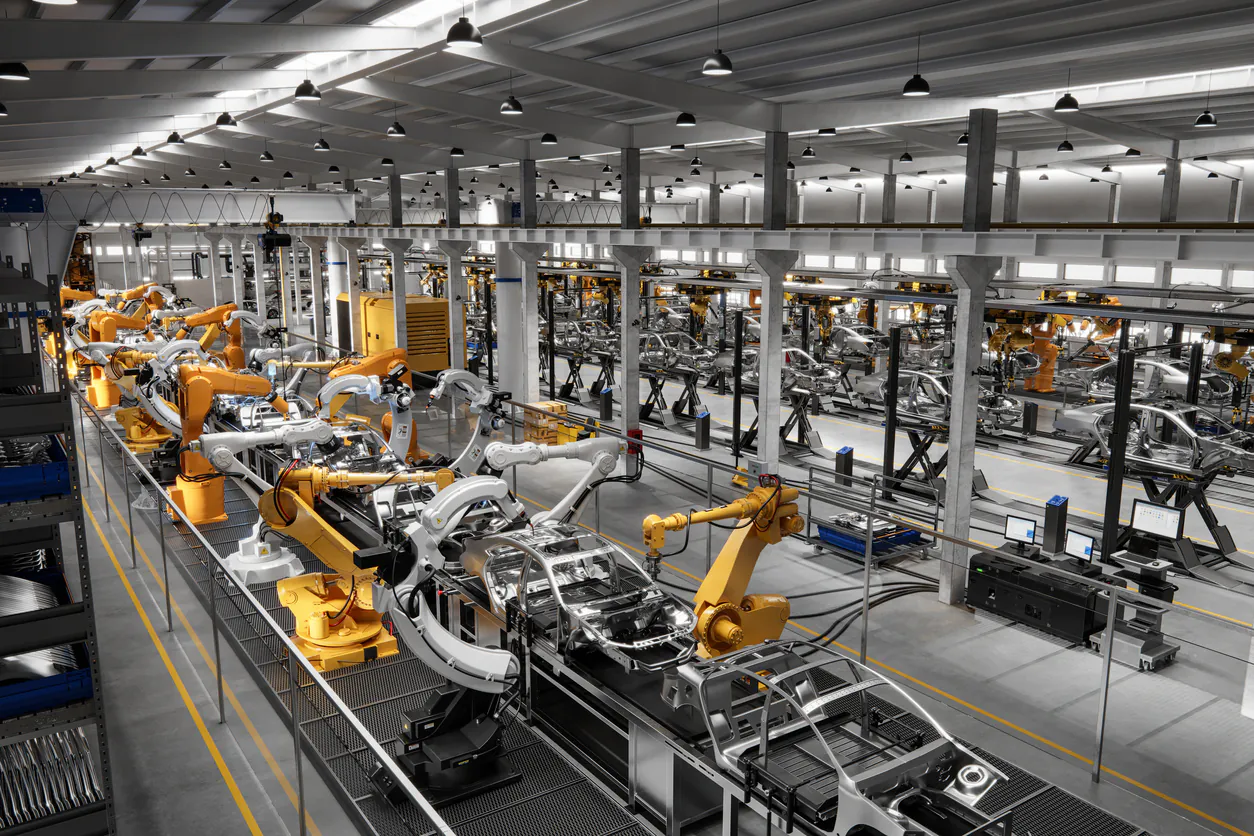In an increasingly competitive market that’s still dealing with setbacks such as supply chain uncertainties and labor shortages, wholesale trade businesses are looking for ways to increase efficiencies and reduce expenses. In addition, a growing number of manufacturers and suppliers are opting for a direct-to-consumer (DTC) business model, putting them in competition with wholesalers and retailers rather than partnering with them.
In light of these challenges, the wholesale industry is increasingly turning to automation as a way to improve margins and reduce lead times. Over the past several years, the automation industry has developed many new products and applications to facilitate warehouse automation and improve supply chain operations, with the help of substantial investments from venture capitalists and other sources. New automation solutions have progressed from trials to widespread use, and are becoming increasingly accessible to businesses of all sizes.
What is Wholesale Trade Automation?
Wholesale trade automation comes in many different forms. Robots and conveyors may be the first thing to come to mind when someone says “automation,” but they aren’t the only ways to automate wholesale processes. From software to drones, there are a wide range of options to suit different warehouse structures and budgets.
Wholesaling involves a high volume of data, tracking purchase and sales orders for hundreds or thousands of different products as well as stock levels and locations, financial accounts, historical reports, forecasts, and more. Upgrading from individual programs and documents such as spreadsheets and accounting software can vastly reduce time spent on administration and can improve the accuracy and accessibility of data throughout the organization.
There are, of course, many physical automation options as well. Physical automation helps minimize employee movement and makes workflows more efficient. Some examples of basic automation technology include conveyors and carousels that move inventory from one location to another. More complex automation setups involve robotics to help with tasks such as picking up and moving inventory across the warehouse, with or without the help of advanced features such as AI. Different warehouse sizes and layouts will require different types of automation setups.
How Does Automation Benefit Wholesale Trade Operations?
As mentioned above, automation can cut down on manual work in a variety of ways. By making operations faster and more efficient, it enables companies to do more work with the same number of people — or the same amount of work with fewer people, which is especially helpful in an industry experiencing labor shortages and rising costs. While wholesale trade automation may have significant upfront costs, especially when implementing advanced robotics and custom warehouse layouts, that investment eventually pays for itself with all the time saved and the reduction in errors and other issues.
Business process automation, for example, can streamline data collection, analysis, and reporting, connecting various systems and applications and consolidating data in a way that is understandable and easily accessible across departments, business partners, and customers. A warehouse management system (WMS) reduces or eliminates the need to manually monitor things such as inventory levels and orders, making it easier to determine optimal stock levels for each product and to detect when an item needs to be reordered. It allows wholesalers to quickly and easily analyze past performance and patterns of demand in order to provide more accurate demand forecasts. It can also automate processes such as stock reorders, purchase order authorization requests, accounts receivable tracking and follow-up, and much more.
Physical automation provides many benefits of its own. Scanners, either manual or automated, can capture data from incoming and outgoing packages in order to monitor and direct inventory. Automated sorting systems can move inventory more accurately and quickly. Conveyors, robots, and other machinery can help put new stock away and pick orders to be shipped. While some systems will physically move the inventory autonomously, others will calculate optimal routes through the warehouse and direct workers to appropriate areas, saving them time and energy. Packing machines can determine optimal packing material and methods for any given order.
There are many different ways that physical automation systems can improve wholesale trade operations. Examples of automation benefits include:
- More optimal resource utilization
- Increased productivity
- Greater warehouse throughput
- Lower labor costs
- Less manual labor required
- Less risk of human errors
- Improved safety for workers
- Greater fulfillment accuracy
- Less inventory loss
- Less chance of dead inventory or stockout events
- Better data accuracy and forecasts
- Better customer service
Challenges of Implementing Automation in Wholesale Trade
Whether introducing automation to an existing warehouse (or set of warehouses) or designing a new space from the ground up, automation can be expensive. A warehouse management system can be a good way to start: it will still require investment in one or more programs as well as ensuring the WMS integrates properly with any existing software, but it won’t be as intensive as setting up physical automation systems. It can also be a foundation upon which more automation systems can be added down the line when there is more budget available for upgrades. Scalability is an important feature when implementing automation solutions, not only to enable a gradual introduction of systems if necessary, but to allow those systems to grow as the business grows and changes.
Another concern is maintenance, both for a WMS and for physical systems. Many warehouses won’t have the in-house staff and expertise to maintain and fix these systems, meaning standard or emergency maintenance will incur additional expenses as well as potentially interrupt normal operations. Finding a good third-party service provider can help minimize these issues, especially if preventative maintenance is performed regularly. A small, predictable disruption in operations for regularly scheduled maintenance is much preferable to unexpected equipment failure.
Proper training for warehouse staff is also an important investment. It’s another upfront cost when installing new systems or hiring new employees, but untrained workers can put both their own health and the health of the business at risk. Aside from preventing workplace injuries, proper training reduces the risk of mishandling equipment and damaging stock or the automation systems themselves.
All in all, introducing automation to a wholesale trade operation can be expensive and time-consuming. Careful planning is needed to determine what kind of system is the right fit and which provider can best meet the company’s needs. But with the right system, the efficiencies gained can easily make up the costs over time, helping wholesalers become more competitive and better able to adapt to uncertain markets and changing workforces.



